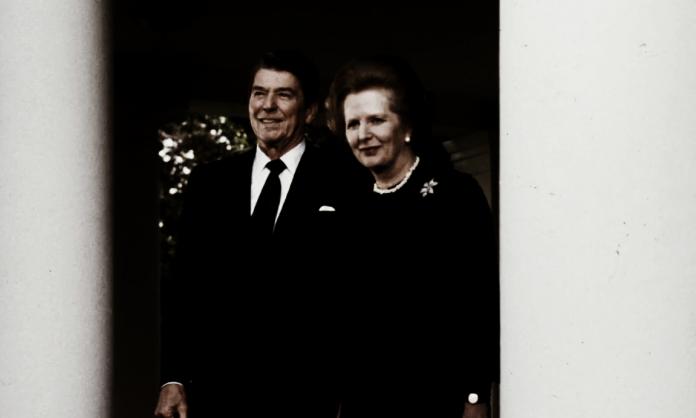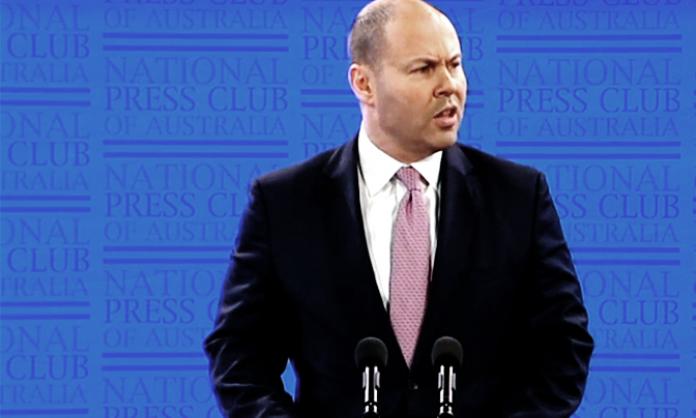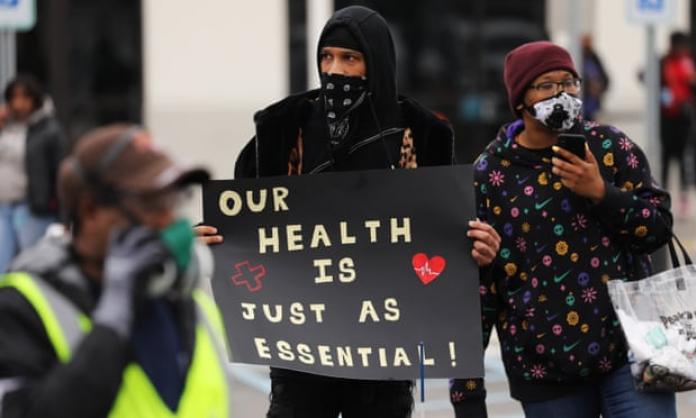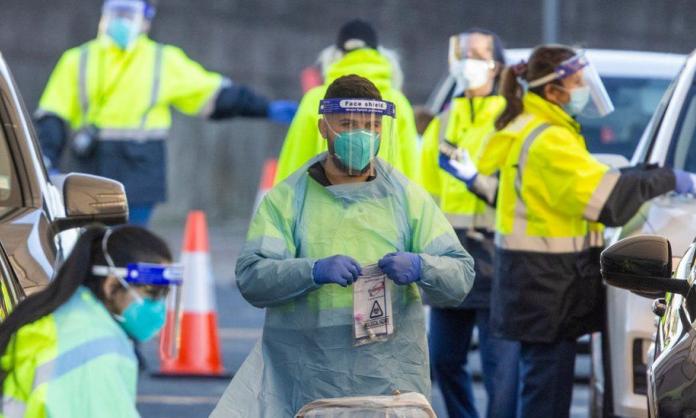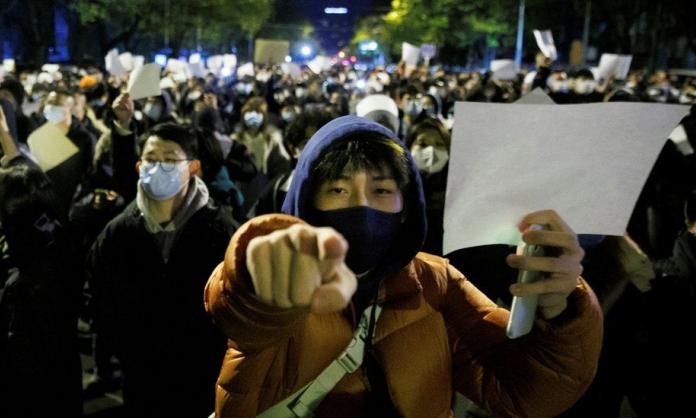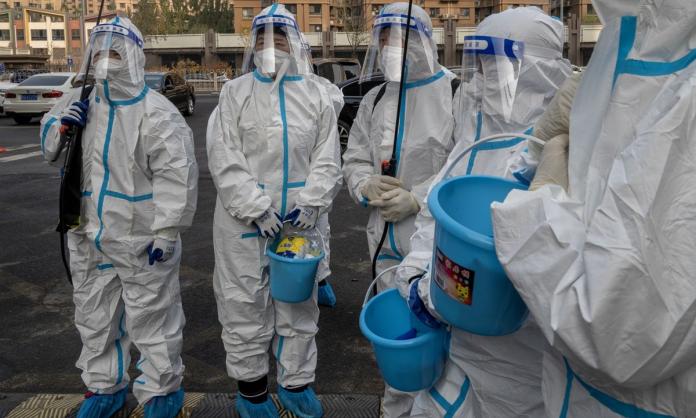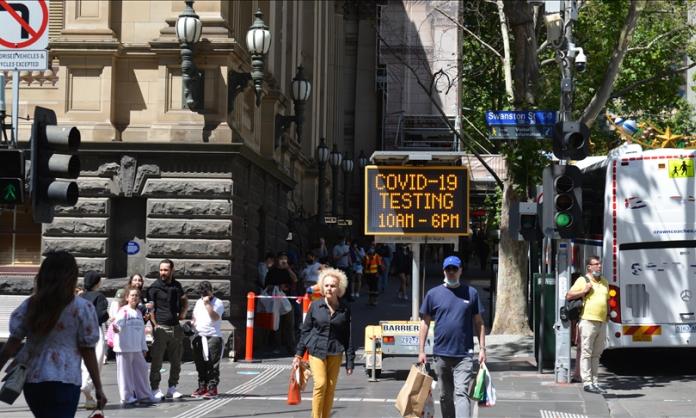Belle Eve Weissman was always trying to save money. But there wasn’t much going around in the Bronx in the early 1940s. New York’s poorest borough was home to hundreds of thousands of first and second generation migrant workers – Russians, Italians, Poles, Germans – many of whom, like her husband, worked in the garment industry for meagre wages. “She had three sugar bowls for money – one for food, one for rent, one for something else. You couldn’t touch them unless it was a real emergency”, her son Joel Geier says over the phone from Chicago, where he now lives. “You had to justify spending any money. Why did we buy that? Did we need it? I had two pairs of pants, that’s it.” After expenses, anything left over at the end of the week she’d take to the bank.
The Great Depression stalked those who lived through it. Into the 1950s and then the 1960s and beyond, a generation’s behaviours were shaped by the catastrophe. For my grandfather Todd McInerney in South Australia, it was using every tea bag at least twice and switching off the car engine at red lights to save petrol. For Belle in New York, it was the Sisyphean pursuit of a cash reserve large enough for the family to survive another downturn. “My mother always expected it to happen again, so you were always saving for hard times”, Geier says. Over decades, the Jewish population moved out of the Bronx. Hispanics and Blacks moved in. But hard times never eased for everyone. The 15th congressional district in the south of the borough is today the poorest in the United States. In some neighbourhoods, the poverty rate pushes 40 percent. Now, the rest of the country and much of the Western world are fast catching up to it.
Geier is semi-retired from a life of socialist organising, which began in the 1950s. Born in 1938, he wasn’t old enough to form memories of the Great Depression. But he knows the stories, and he can see aspects of them being retold in today’s economic downturn. “What’s the most shocking thing? Tens of thousands of cars lined up, in one city after another, in front of food banks. We have breadlines again in city after city. And we’ve got farmers ploughing crops back into the ground”, he says. “It’s the worst crisis in the history of the capitalist system. It’s come on faster than anything in history, and it’s affecting production, distribution and consumption – and we’re just at the beginning.”
Faster no doubt. The International Labour Organization warns that 1.6 billion people are in “immediate danger of having their livelihoods destroyed”. Two billion informal economy workers have already suffered a 60 percent reduction in incomes. The Bank of England estimates that the British economy will register the largest contraction in 300 years. But what exactly are we facing? Initial talk about a V-shaped crisis – that is, a fast return to normality after the economy bottoms out – has receded, though not disappeared, as hopes of a quick resolution of the pandemic have been dashed.
“It will take a while to figure out exactly what is going on”, Geier says. “Four months ago, we wouldn’t have imagined having this conversation; in six months, who knows what the situation will be? In the 1970s, we didn't talk about neoliberalism. We called it ‘the employers’ offensive’. We borrowed language from the Comintern [the international association of Communist parties founded in 1919] and applied it to a situation that it didn’t fit. It was only later [in the 1980s], as those carrying out the attacks became more ideological and more right wing that it became clearer that it wasn't just an attack, but an entire reshaping of global capitalism.”
The reshaping entailed increased economic integration, usually called globalisation, under the leadership of the United States. Building on existing international treaties and institutions, the US created a new architecture of production, finance and trade through which its companies could exploit workers throughout the world and speculate in every field. The new order blew the old Eastern Bloc out of the water and, as China began to join the world economy, ushered in an economic boom, albeit an uneven one. In the 21st century, a symbiotic relationship developed between the US as financier, consumer of last resort and supplier of capital, and China as the assembly centre of the world, supplying a vast reserve of cheap labour.
--------------------
Most economists and commentators argue that the current crisis is an “exogenous shock” – that is, something unrelated to the general workings and structure of the economy – and therefore an accident from which “normality” will eventually return, even if the crisis is protracted. Picture a car crashing into a tree, for example. You’ll draw different conclusions from the incident if it is a result of a brake failure, as opposed to being caused by a dog running onto the road. If the brakes were the problem, you might have a nationwide recall of the vehicle model and re-evaluations of the braking system. But if it was the dog, you’ll consider it “external”, nothing to do with the car, and probably just shrug, fix the panels and get back behind the wheel. Economists and establishment politicians today by and large are all about getting back behind the wheel as soon as practicable.
“Most capitalist crises seem to start with a trigger like a huge jump in the oil price (1974-5) or a slump in the stock market (1929 and 2001) or a financial crash (2008-09). Behind those crises lies a recurring crisis in the profitability of capital that forces capitalists to stop investing”, says Michael Roberts, author of The Long Depression: Marxism and the Global Crisis of Capitalism, via email from Britain. “This crisis seems very different. It was started by nature, a virus, and the collapse in production has been imposed by governments in response.”
But, he says, things aren’t always as they seem. First, the genesis of the virus, like many modern pathogens, is probably bound up with industrial farming and untrammelled capitalist expansion into wilderness areas. That is, the economic drive for profits is contributing to new viral outbreaks and mutations. The pandemic, then, is not at all “external” to the economy. Second, and virus aside, Roberts argues that the pandemic exposed the internal contradictions of the world economy, which was showing signs of a new downturn well before the government lockdowns. In that sense, he says, “The crisis is not so different from other capitalist crises”:
“The major capitalist economies were close to recession: profitability was low and falling, investment also. Japan was in recession, Europe nearly so and many large poorer economies were already in a slump: Brazil, Russia, South Africa, Mexico, Argentina ... I see it as a new leg in what I have called the Long Depression of the last 10 years that started with the 2008-9 Great Recession. The Long Depression is characterised by low growth, low investment, low wage growth and low profitability for most capitalist enterprises compared to the post-war average and the first decade of this century. Now, we could be entering another 10 years of depression. That is what happened between 1873 and 1895. There was a long depression in production, investment and profitability in Europe and the US. Only this time, it is global and integrated.”
Economics is often thought to be just numbers, money, graphs and mathematical computations. But ultimately, “the economy” is nothing more than the way people organise to produce and distribute the things we need. So the question of the struggle for control over even small sections of the economy is profoundly important for how the world as a whole is perceived. Exactly which people control or influence productive activity is decisive not just to who gets what. Everything down to the production of mass culture is ultimately determined by who controls the fabric of human relationships underpinning all the indicators we read about in the business pages.
Before retiring, Roberts was employed for more than 30 years as an economist with various British and US banks and financial institutions. That, he says, allowed him to see the inner institutional workings of financial capital and the thought processes involved “in a world dominated by people often to the right of Genghis Khan”. While he has lived through or analysed many downturns, one thing at the front of his thoughts is the British miners’ struggles during the last systemic crisis, which led to the neoliberal restructure. The miners were one of the most organised groups of workers in the world. Even before the crisis, they were the target of ruling class attacks. When the economic downturn hit and the “employers’ offensive” went into gear, crushing the miners became a key objective of the British government – if the miners could be beaten, all working class resistance could be defeated.
“In the miners’ strike of 1972 to preserve wages and conditions against the government, I was involved in alerting the miners to the movement of coal at a big gas works Saltley Gate, Birmingham. The local trades council ignored the situation ... [But it soon] led to the biggest picket event in the history of miners’ battles to that date. The defeat of the miners [in 1985] was a pivotal moment in British labour history from which labour has never recovered. The 1980s are a decade for me that is best forgotten (at least once the miners were beaten). It was a decade of get rich, lots of cash, everybody for themselves, property boom, rising inequality, cuts in taxes for the rich and, last but not least, terrible, reactionary popular music. The 1990s were little better.”
--------------------
Some of the most important economic relationships, linkages between people, are those forged internationally through global supply chains. Yet those links are simultaneously ruptured in various ways by state borders and the construction of various national identities that pit working people against each other as competitors, rather than collaborators, in the world economy. As national governments and ruling classes try to order, and gain advantages in, the international division of labour, those ruptures can become the ugliest part of the system.
As an example, Geier talks about the horror stories told by his Jewish relatives arriving in New York from Europe in the early 1940s and of the new war economy burying the Depression but sustaining unspeakable depravity as competing states found that, in an era of mass production, those unable to organise the mass destruction of their rivals would be left behind in the new world order forged during the Second World War.
This international aspect of the current situation is both fascinating and unnerving. Ashley Smith, managing editor of the Marxist journal Spectre, agrees that the crisis is not so much a “new” event as an extension of the 2008-09 crash, although he is not as emphatic about just how deep this collapse may get. “Will it be a recession or a depression? I don’t know”, he says via Skype from his home in Vermont. “You’ve got a very contradictory situation right now, in which the state antagonisms are growing and yet the economies are still deeply integrated. But I think these are the end times of the neoliberal order, both the geopolitical order that has existed and the structure of the world economy. The regime of accumulation they have used for the last several decades is now spent.”
Smith uses the word “interregnum” – a period in which normal government is suspended. It seems apt. But what comes next? More world leaders are now speaking in different tones about the need for national self-sufficiency. There is no doubt that there will be tighter controls on the movement of goods and people, that there will be a series of protections to shield some companies from international disruptions. To what extent can an integrated world order dis-integrate without even greater carnage? “It’s hard to predict anything. So I wouldn’t want to stake my farm on any of this”, he says. “I think many states in the world have a contradiction at their heart at the moment: a capitalist class committed to global integration and a section of the political class preaching economic nationalism. We’ll have to wait and see how developments unfold. But the dynamics of increased national antagonisms are there.
“I don’t think we’re going to see a re-run of developments in the early 20th century, in terms of national capital blocs more seamlessly integrated with their state, facing off with other blocs of capital integrated with their state. It’s just different. I think we need to account for that and see how it has a mitigating impact on military rivalry and open war. That said, we are in the most severe crisis the world has seen since the Great Depression. Who knows what the capitalists will be driven to to find a solution?”
We can’t predict the future – but we can talk about the “known knowns”, the things that we know that we know, and the “known unknowns”, the things that we know we don't know.
For Roberts, the known known is “a mega slump in production, investment and jobs for billions of people this year” that will spare no country. The known unknowns include how long the slump will last, the situation with the pandemic and who will still be in office this time next year. Will it still be Donald Trump in the US, Angela Merkel in Germany and Emmanuel Macron in France? Or will political moods shift against them? “Above all”, he asks, “will there be an intensification of the trade and technology war between the US and its allies and the rising economic and political power that is China?”
The known knowns, for Geier are, first, that open class conflict is fast approaching. “There’s going to be a period of much more intense class struggle”, he says. “For many capitalists, this is going to be about survival. If they don’t get their profit rates up, they will be bankrupted. They will use all the usual means at their disposal. Workers are going to have to defend themselves.” Second is that a major restructuring of “many neoliberal forms of the last 40 years will be required to exit this prolonged deep depression”. One of the known unknowns is precisely what that restructuring will entail.
Smith also wants to highlight the uncertainty of the situation. “I don’t want to be alarmist. And I don’t want to predict world war three. I see factors mitigating open conflict. While there is a clear consensus in the US ruling class that China is a problem, they want to hold on to the neoliberal order. But that model has failed. It’s over ... I think you can see increased battles over spheres of influence. More battles over who controls Asia. More battles over who controls Africa. More battles over who controls the shipping lanes and the pipeline routes. I think that’s more likely going to be the pattern. But for that to come about, they’re going to have to rip up a lot of stuff that they’ve done – supply chains, infrastructure, agreements. That’s not simple.”
For Belle Eve Weissman and tens of millions of others, the Depression became a world war and remained etched in memories for the rest of their days. Today, the virus is ravaging the world and becoming an economic cataclysm. The pandemic will pass, although not soon enough to spare hundreds of thousands of lives. But this moment of crisis will endure in the collapse and then realignment of the world economy. The memories we carry with us will in large part depend on how the class struggle unfolds within it.




